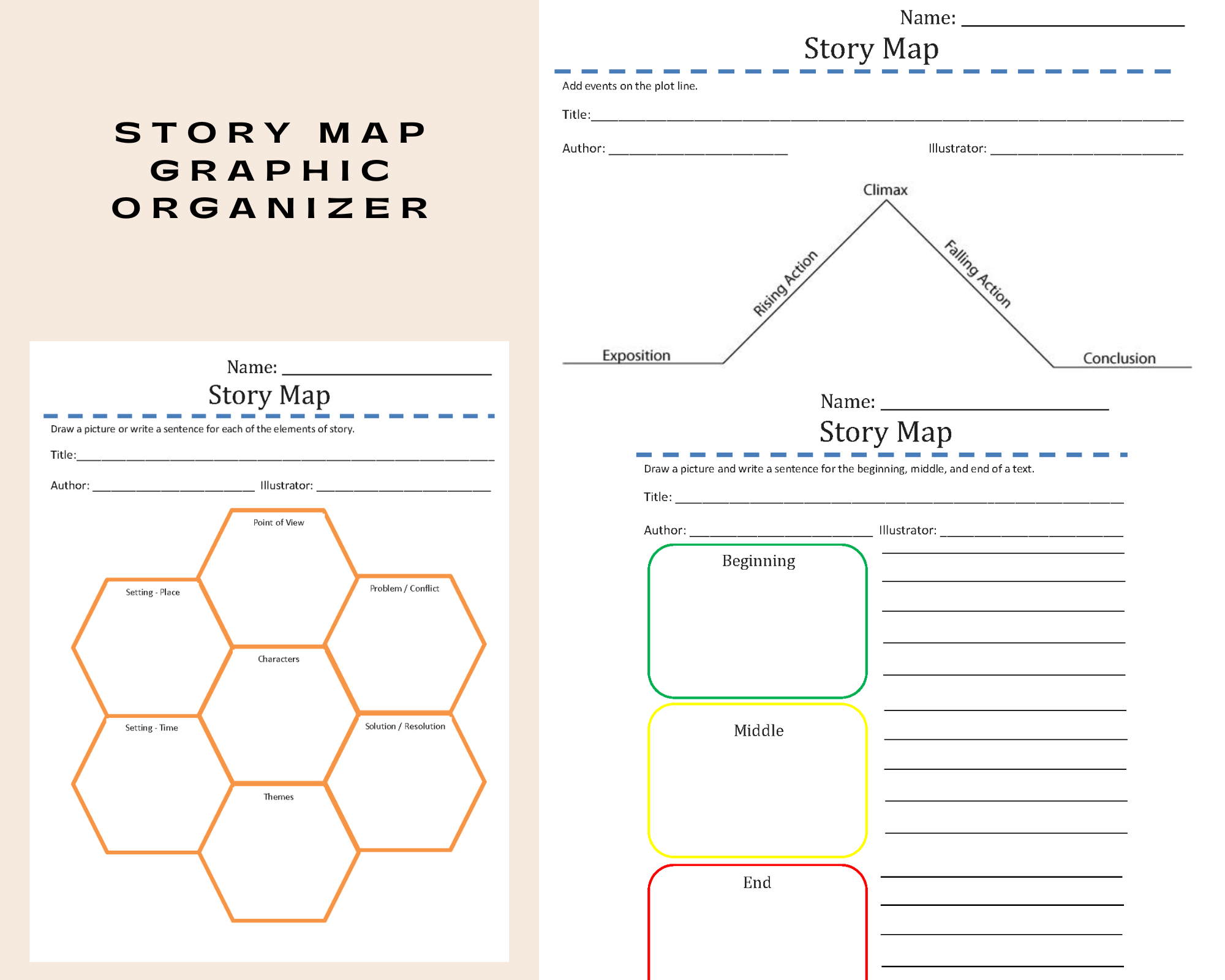Story Map Graphic Organizer
A story map is a graphic organizer that helps students to understand the structure and elements of a story. A story map can be used before, during or after reading a story to help students identify the main characters, setting, problem, events and solution of the story. A story map can also help students to summarize, retell and write their own stories.
There are different types of story maps that can be used for different genres and purposes. Some common types of story maps are:
- Beginning-Middle-End: This type of story map divides the story into three parts: the beginning, where the characters and setting are introduced and the problem is presented; the middle, where the events that try to solve the problem occur; and the end, where the problem is resolved and the outcome is revealed. This type of story map can be used for any kind of narrative story, such as fairy tales, fables, myths or realistic fiction.
- Somebody-Wanted-But-So-Then: This type of story map focuses on the character's motivation, conflict and resolution. It consists of five parts: somebody, who is the main character; wanted, what the main character wanted or needed; but, what obstacle or challenge prevented the main character from getting what they wanted; so, what the main character did to overcome the obstacle or challenge; and then, what happened as a result of the main character's actions. This type of story map can be used for stories that have a clear plot structure and a single main character, such as adventure stories, historical fiction or biographies.
- Problem-Solution: This type of story map identifies the problem and solution of the story. It consists of two parts: problem, what the main conflict or issue in the story is; and solution, how the conflict or issue is resolved or addressed. This type of story map can be used for stories that have a simple or straightforward plot and a clear message or lesson, such as informational texts, persuasive texts or moral stories.
- Character-Setting-Plot: This type of story map describes the main elements of the story. It consists of three parts: character, who are the main people or animals in the story; setting, where and when the story takes place; and plot, what happens in the story. This type of story map can be used for stories that have complex or multiple characters, settings and events, such as fantasy stories, science fiction or historical fiction.
To use a story map graphic organizer effectively, students should follow these steps:
- Choose a type of story map that suits the genre and purpose of the story.
- Read or listen to the story carefully and pay attention to the key details.
- Fill in the story map with words or pictures that summarize the main elements of the story.
- Review and revise the story map to make sure it is accurate and complete.
- Use the story map to retell, summarize or write about the story.
A story map graphic organizer is a useful tool that can enhance students' comprehension and creativity skills. By using a story map graphic organizer, students can better understand the structure and elements of a story, as well as create their own stories based on their imagination.

